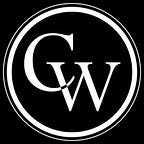Eyewear Retailer Warby Parker Rsises $245M in New Funding
Warby Parker, the popular direct-to-consumer prescription eyewear retailer, raised $245 million in fresh funding in recent months. The new funding is a combination of two previously undisclosed rounds. Durable Capital Partners led a $125 million Series F round in the second quarter of 2020. D1 Capital led a $120 million Series G round that closed in August. Participation also came from T. Rowe Price and Baillie Gifford. The infusion of new funds now puts the eyewear company’s valuation at approximately $3 billion.
Warby Parker’s Recipe for Success
One of the major elements behind Warby Parker’s success is that it sells fashionable prescription eyewear starting at only $95 using a direct-to-consumer model. Additionally, customers can order multiple frames online and try them on at home. Warby Parker processed the payment only once the customer decides on a style. The customer may ship the other frames back for free.
During the eyewear checkout process, customers can upload a picture of their eyeglass prescription. Warby Parker is in-network with UnitedHealthcare. For other insurance, customers simply submit their Warby Parker receipt for reimbursement to the applicable insurance provider. Alternatively, customers can use the balances in their Flexible Spending Account (FSA) and/or Health Spending Account (HSA) to purchase Warby Parker frames. This efficiency has propelled the startup’s success.
Eyewear Brand Founded in 2010
Founded in 2010 by students at the Wharton School of the University of Pennsylvania, Neil Blumenthal, Andrew Hunt, David Gilboa, and Jeffrey Raider started the company as part of the school’s Venture Initiation Program. They observed that most designer glasses are simply licensed to large eyewear companies and then sold in bulk to stores. By pursuing a direct-to-consumer business strategy, they could cut out unnecessary intermediaries and deliver major cost savings to the customer.
Co-founder and CEO Neil Blumenthal said: “It’s how we’re able to sell a $500 product at $95. We design the eyewear ourselves; we produce them using the best materials out there; now we’re able to insert the lenses ourselves and ship direct to customers, which enables us to cut out the middleman.”
The Startup Rounds
In 2011, the startup raised a $12.5 million Series A round. A Series B round followed, raising $37 million in 2012. Warby Parker attained unicorn status in 2015 with a valuation of $1.2 billion. Former J. Crew CEO Mickey Drexler was an early investor in the company and joined its board in 2013. Although started on Wharton’s campus in Philadelphia, the company is now based in New York City.
Warby Parker’s vertically-integrated and sustainable business model has been a recipe for growth. To control the eyewear supply chain better, Warby Parker opened a 34,000-square-foot optical lab in Rockland County, New York in 2017. This optical lab allows better managing of manufacturing, ensuring quality standards and coordinating production schedules with order volumes as needed.
Other eyewear startups have attempted to mirror Warby Parker’s success with copy-cat models. The brand loyalty Warby Parker built up with customers from its early days has allowed it to remain resilient against newcomers. The founders positioned Warby Parker as the “anti-Luxottica.” Luxottica is the Italian eyewear conglomerate that has a monopoly-like position in the global eyewear industry. Luxottica owns LensCrafters, Pearle Vision, Ray-Ban, Oakley, and the licenses for the frames of luxury brands such as Chanel and Versace.
The prescription eyewear brand began exclusively online in 2010, only launching its first physical store in 2013. As the company expanded beyond e-commerce, it opened more brick-and-mortar retail locations. The brick-and-mortar storefronts have contributed to greater online spending on the Warby Parker website. They also enabled the company to gain more comprehensive insights into shopping behaviors. Today, Warby Parker has 125 stores across the United States and Canada.
Effects of COVID-19
Amid the COVID-19 operations, Warby Parker had to rapidly shift its eyewear operations and model. Luckily it had already introduced features that made the online experience easier. In 2019 the brand implemented a virtual try-on feature using augmented reality technology. This feature enabled online users to seamlessly see how different frames fit on their face. That technology was built on Apple’s ARKit.
Socially Conscious Eyewear Brand
Following in the footsteps of other brands such as TOMS and Thrive Market, Warby Parker has committed to social consciousness. For every pair of Warby Parker eyewear purchased, a pair is donated to someone in need around the world through its “Buy a Pair, Give A Pair” program. Warby Parker has also partnered with a number of organizations and local government agencies, such as the Department of Health in Baltimore and NYC Department of Education, to provide free vision exams to low-income communities. In terms of environmental impact, Warby Parker touts itself as a 100% carbon neutral company.
The popular eyewear company plans to use its newly raised Series F and Series G funds to continue expanding operations and technological innovation. Warby Parker seems well-positioned for continued future growth and is a startup to watch.
